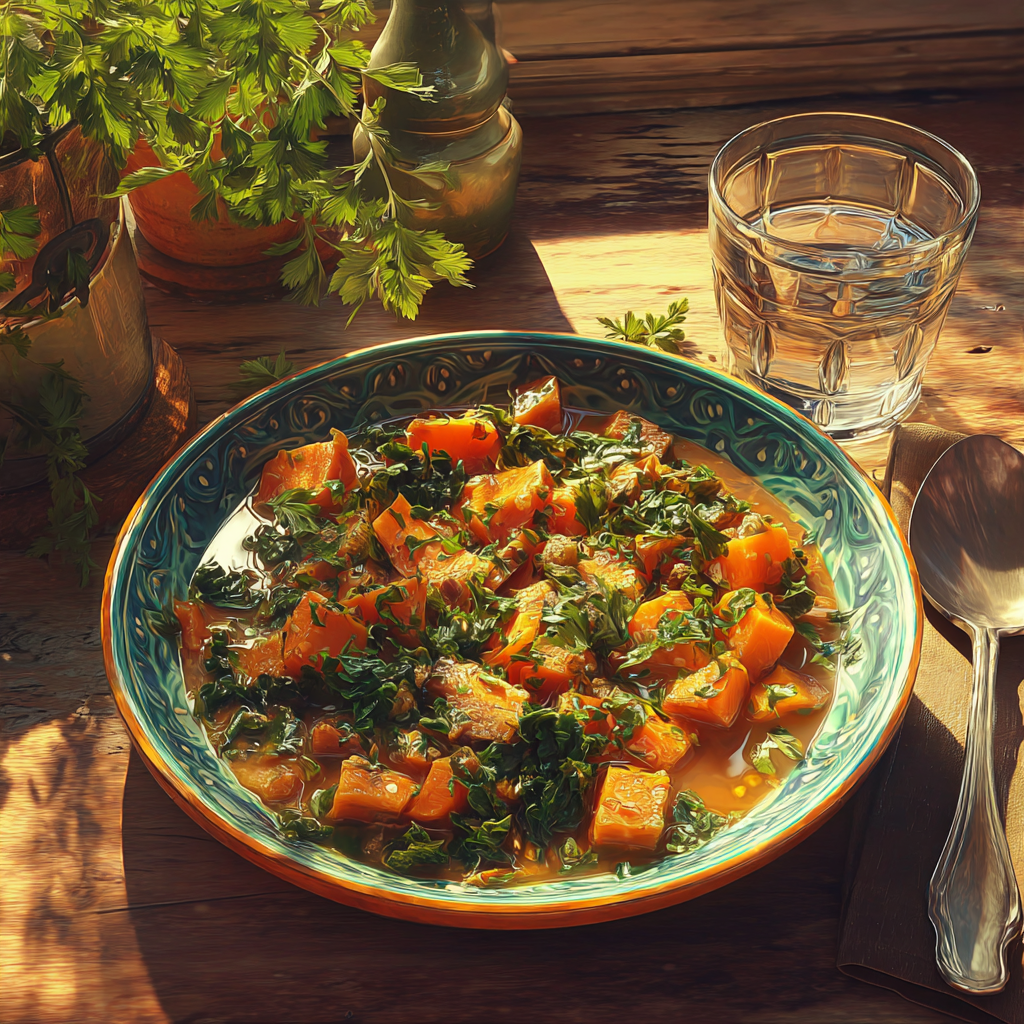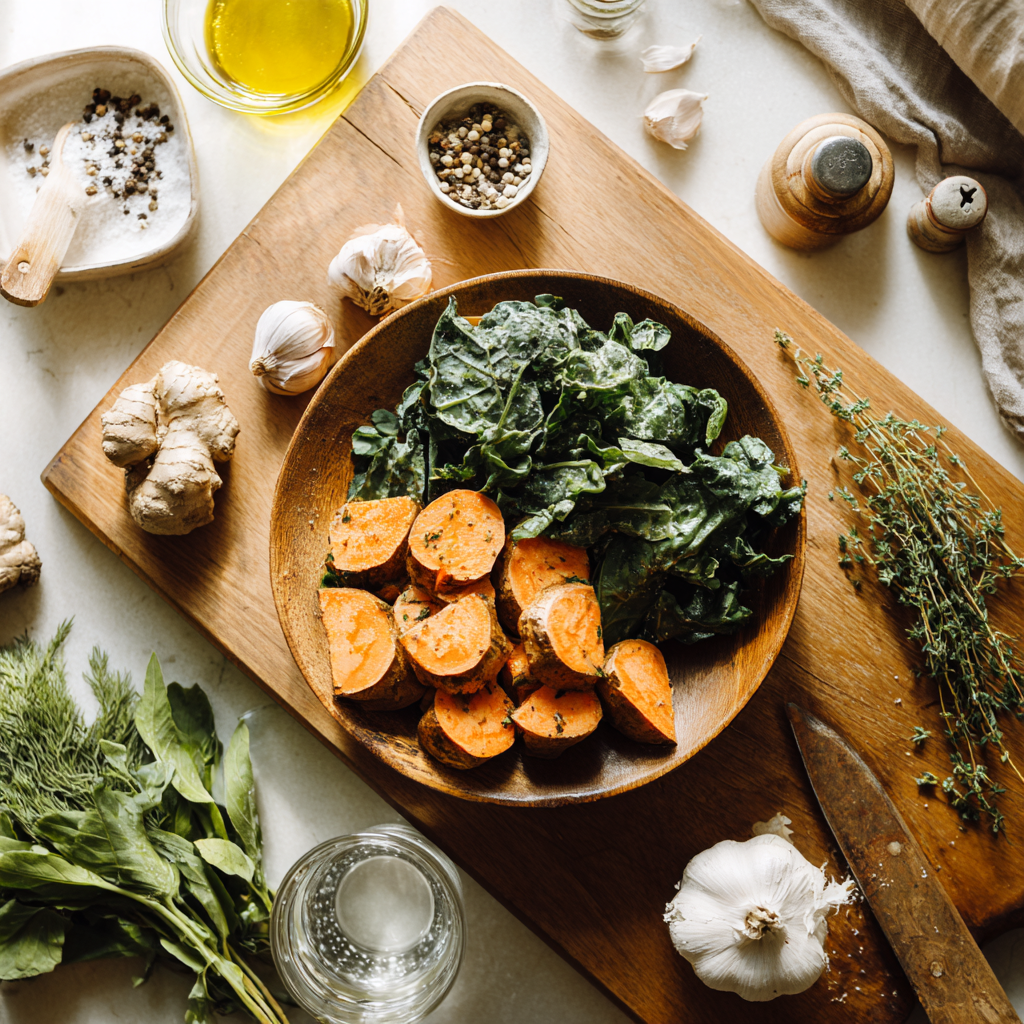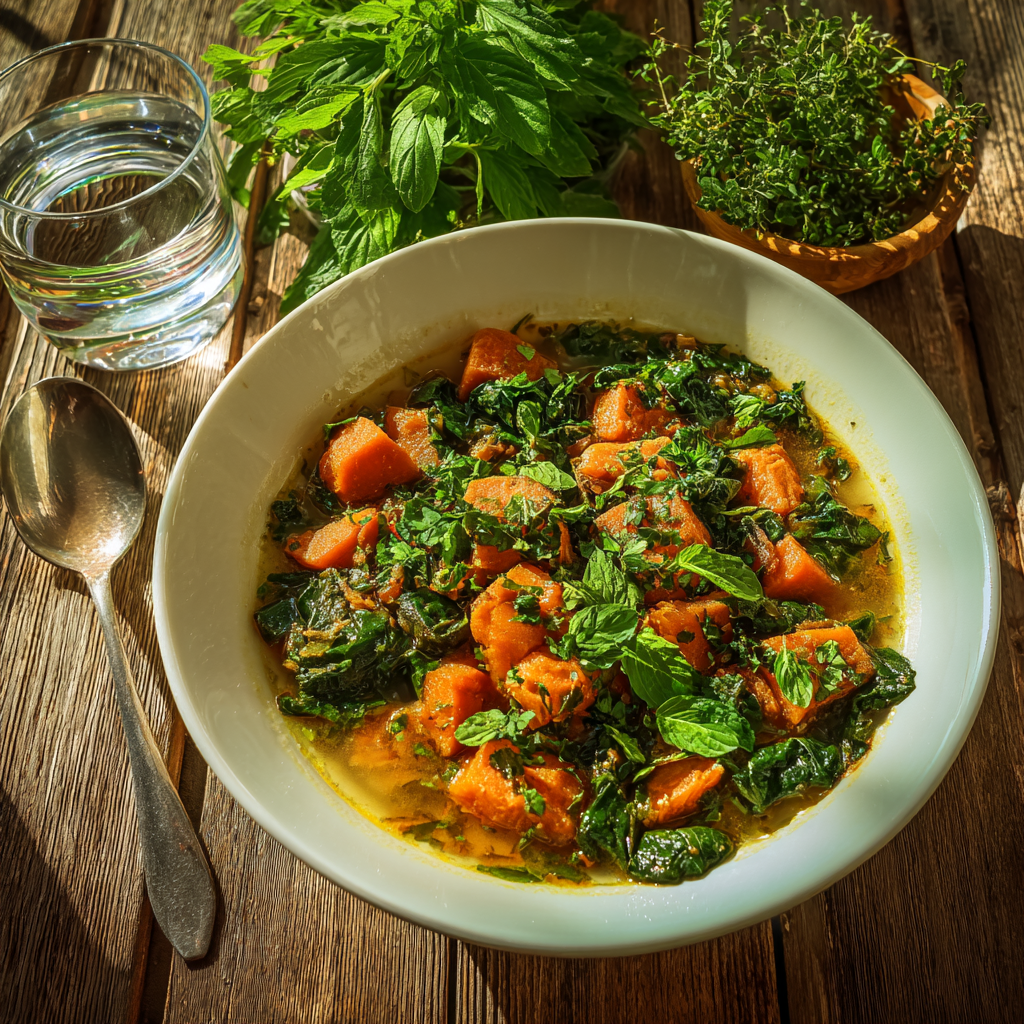Introduction
I still remember the day I realized how much food impacts my health. After years of struggling with fatigue and joint pain, I decided to take control of my diet. That’s when I discovered the Autoimmune Protocol (AIP) diet. This lifestyle change didn’t just help me manage my symptoms—it transformed the way I think about food. Today, I’m excited to share my passion for healthy eating by diving into autoimmune protocol crock pot recipes. These meals are not only nourishing but also easy to prepare.
The AIP diet is more than just a list of foods to avoid. It’s a powerful tool designed to reduce inflammation and support healing in people with autoimmune conditions. By cutting out common triggers like processed foods, grains, dairy, and legumes, the diet helps reset the body. Over time, many people reintroduce certain foods and find relief from symptoms. The best part? You don’t have to sacrifice flavor or convenience to stick to the plan.
This is where a crockpot comes in handy. If you’ve ever wondered, What is the best thing to cook in a crockpot?, the answer is simple: nutrient-dense meals that fit your dietary needs. Slow cooking makes preparing autoimmune protocol crock pot recipes a breeze. You can toss in fresh ingredients, set the timer, and let the crockpot do the work. No standing over a hot stove or worrying about meal prep during a busy day.
In this article, I’ll share some mouthwatering recipes that align with the AIP diet. I’ll also answer common questions like What can you eat on the autoimmune protocol diet? and What meat is allowed on the autoimmune protocol diet?. My goal is to show you how delicious and satisfying AIP-friendly meals can be while keeping things simple and stress-free.
What Can You Eat on the Autoimmune Protocol Diet?
When starting the AIP diet, it’s important to understand what’s allowed and what’s not. The guidelines might seem strict at first, but they’re designed to give your body a break from inflammatory foods. Here’s a quick breakdown:
- Avoid: Processed foods, grains, dairy, legumes, nightshades (like tomatoes and peppers), eggs, nuts, seeds, refined sugars, and industrial oils.
- Enjoy: Lean meats, fish, vegetables (except nightshades), fruits, healthy fats (like avocado and olive oil), and herbs.
These rules might sound limiting, but they open the door to creativity in the kitchen. With a little practice, you’ll find plenty of ways to use these ingredients in flavorful dishes. For example, lean proteins like chicken, turkey, and grass-fed beef are staples of the AIP diet. Seafood lovers can enjoy salmon, shrimp, and other nutrient-rich options.
Vegetables play a big role too. Think leafy greens, broccoli, zucchini, carrots, and sweet potatoes. These veggies provide essential vitamins and minerals while adding color and texture to your meals. Healthy fats, like coconut oil and ghee, keep you full and satisfied. And don’t forget herbs! Fresh or dried herbs like basil, cilantro, and rosemary elevate the taste of any dish.
Now, here’s the fun part: turning these ingredients into slow-cooked meals. A crockpot is perfect for AIP cooking because it tenderizes tough cuts of meat and blends flavors without much effort. Imagine coming home to a rich stew made with grass-fed beef, sweet potatoes, and kale. Or waking up to a hearty breakfast hash cooked overnight. These are the kinds of meals we’ll explore together.
Slow cooking also lets you experiment with different combinations. For instance, you can mix chicken thighs with carrots, ginger, and turmeric for an anti-inflammatory boost. Or try a seafood chowder packed with cod, leeks, and cauliflower. The possibilities are endless when you stick to approved ingredients and let the crockpot do the heavy lifting.
Speaking of crockpots, you might be wondering, What is the difference between a slow cooker and a crockpot? Technically, a crockpot is a type of slow cooker, but the terms are often used interchangeably. Both appliances cook food at low temperatures over several hours, making them ideal for AIP recipes. Whether you call it a crockpot or a slow cooker, it’s a game-changer for anyone following the diet.
By now, you’re probably eager to get started with autoimmune protocol crock pot recipes. In the next sections, I’ll share step-by-step instructions for creating meals that are as tasty as they are nourishing. I’ll also address questions like What meat is allowed on the autoimmune protocol diet? and offer tips for stocking your pantry with AIP-friendly staples. Let’s make eating healthy both easy and enjoyable!
Choosing the Right Ingredients for Autoimmune Protocol Crock Pot Recipes
Alright, let’s dive into the nitty-gritty of what makes autoimmune protocol crock pot recipes truly shine: the ingredients. Picking the right ones is like assembling a dream team for your health. You want every player—whether it’s the protein, veggies, or spices—to bring something valuable to the table. By the way, if you’ve ever wondered how to prep food that’s both healing and delicious, you’re in the right place.
What Meat is Allowed on the Autoimmune Protocol Diet?
Here’s the deal: not all proteins are created equal when you’re following the AIP diet. But don’t worry, there’s still plenty to work with. Chicken, turkey, beef, lamb, and pork are all fair game, as long as they’re free from additives and processed junk. Honestly, I used to think all meat was the same until I started paying attention to sourcing. Trust me, choosing high-quality options makes a world of difference. Look for pasture-raised chicken or grass-fed beef whenever possible. These animals are raised in better conditions, which translates to healthier fats and more nutrients in your meals.
Tips for prepping meat? Oh, I’ve got a few. First, marinate it in AIP-friendly seasonings to infuse flavor without breaking any rules. Think fresh lemon juice, garlic, and herbs like rosemary or thyme. Funny enough, I once tried skipping the marinade because I was in a rush, and the dish turned out… well, bland. Lesson learned. Another trick is to brown the meat before tossing it into the crockpot. It adds depth to the flavor profile and gives the dish a little extra oomph. If you’re curious about specific recipes, check out this roast beef recipe that nails the balance between tender meat and bold flavors.
Best Vegetables and Spices for Slow Cooker Meals
Now, onto the veggies. Sweet potatoes, carrots, zucchini, leafy greens—you name it, these are your go-to staples. They’re packed with fiber, vitamins, and antioxidants, making them perfect for slow-cooked meals. One of my favorite combos is sweet potatoes and kale. It’s hearty, comforting, and feels like a warm hug in a bowl. Plus, sweet potatoes hold up beautifully in the crockpot without turning mushy.
Spices are where things get fun. Turmeric, ginger, garlic powder, and sea salt are all AIP-approved and add layers of flavor. I swear by turmeric—it’s like nature’s anti-inflammatory superhero. Pair it with ginger, and you’ve got yourself a powerhouse duo. Here’s the thing: spices can make or break a dish, so don’t skimp on them. For example, try this soup recipe that uses turmeric and ginger to create a soothing, golden broth. It’s one of those meals that tastes even better the next day.
I also love experimenting with combinations. For instance, toss some diced carrots and leeks into your crockpot with chicken thighs and a sprinkle of dried basil. Or mix zucchini and spinach with ground turkey for a lighter stew. The beauty of autoimmune protocol crock pot recipes is that they’re incredibly forgiving. Just throw everything in, set it, and forget it.
Understanding Your Cooking Tools
Let’s talk tools for a second. You might be wondering, “What’s the real scoop on slow cookers versus crockpots?” Great question. Technically, “Crockpot” is a brand name, while “slow cooker” refers to the broader category of appliances. Both do essentially the same thing: cook food low and slow over several hours. But here’s the kicker—they’re not exactly identical. Some slow cookers have additional settings or features that older crockpot models might lack. That said, either will work perfectly fine for autoimmune protocol crock pot recipes.
Personally, I’ve got a trusty old crockpot that’s seen me through countless meals. It’s nothing fancy, but it gets the job done. My only advice? Make sure your appliance has a reliable temperature control. Undercooking or overheating can mess with the texture of your food, especially when you’re dealing with delicate proteins like fish or chicken. And if you’re cooking brunch dishes, consistency matters too. Speaking of brunch, Ina Garten’s make-ahead brunch recipes are a lifesaver for busy mornings, though they lean more toward traditional fare than AIP.
Bobby Flay fans might appreciate his approach to brunch casseroles, which often include eggs and dairy. Of course, those aren’t AIP-compliant, but you could adapt the concept using compliant ingredients. Check out his brunch casserole recipes for inspiration, then tweak them to fit your dietary needs. Who says you can’t enjoy a hearty breakfast hash just because you’re avoiding nightshades?
Why the Crockpot is a Game-Changer
Back to the topic at hand: why is the crockpot such a rockstar for AIP cooking? Well, for starters, it simplifies meal prep. Toss in your ingredients, press a button, and voila—dinner practically cooks itself. No babysitting required. This is especially helpful if you’re juggling work, family, or just life in general. I remember one particularly chaotic week when I forgot to plan dinner. Thankfully, I had prepped a batch of stew earlier and just popped it in the crockpot. Crisis averted.
Another perk? Slow cooking enhances flavors naturally. There’s no need for artificial enhancers or sneaky additives. Everything melds together beautifully, creating rich, complex tastes that feel indulgent but are actually good for you. If you’re unsure where to start, focus on soups or stews. They’re forgiving, versatile, and always satisfying. Seriously, once you try an AIP-friendly soup, you’ll wonder how you ever lived without it.
One last note: don’t stress about perfection. Some days, I toss random veggies and leftover meat into the crockpot without measuring anything, and it still turns out amazing. The key is using quality ingredients and trusting the process. After all, cooking should be enjoyable, not stressful. So grab your crockpot, stock up on AIP staples, and let’s get cooking!
Creating Flavorful Dishes with Ease
Let’s get to the good stuff—what’s the best thing to cook in a crockpot? Honestly, the options are endless, but some dishes just shine in the slow cooker. Stews, soups, shredded meats, and bone broths are my go-to picks for autoimmune protocol crock pot recipes. They’re not only versatile but also deeply satisfying. Here’s the deal: these meals let you pack in tons of flavor while keeping things simple. Plus, they’re perfect for batch cooking, which is a lifesaver on busy days.
Take beef stew, for example. I mean, who doesn’t love tender chunks of grass-fed beef simmered with sweet potatoes, carrots, and kale? It’s hearty, comforting, and feels like a warm hug in a bowl. Or how about a chicken curry? Now, before you raise an eyebrow, hear me out. AIP-friendly curries skip the nightshades and dairy but still deliver bold flavors thanks to turmeric, ginger, and coconut milk. Trust me, it’s a game-changer. And don’t even get me started on vegetable-packed soups. They’re light yet filling, and you can toss in whatever veggies you have on hand.
Here’s a little trick I’ve picked up over the years: layer your flavors. Start with a base of aromatics like garlic, onion, or leeks. Then add your protein, followed by hearty veggies like sweet potatoes or broccoli. Finish with spices and herbs to tie everything together. Funny enough, I once forgot to add the spices until the very end, and the dish was… well, pretty bland. Lesson learned. Oh, and here’s a pro tip: deglaze the pan if you brown your meat beforehand. Those little caramelized bits add so much depth to the final dish.
Practical Tips for Avoiding Bland Results
Nobody wants a boring meal, right? So let’s talk about how to keep your autoimmune protocol crock pot recipes exciting. First, don’t skimp on seasoning. Salt might be off-limits for some diets, but sea salt is totally fine here, and it makes a world of difference. Pair it with fresh herbs like cilantro or parsley to brighten up the dish. Another trick? Add a splash of citrus juice—lemon or lime works wonders—at the end of cooking. It adds a zesty kick that wakes up all the other flavors.
By the way, don’t underestimate the power of texture. Sometimes, a dish can taste great but feel a little flat because everything is soft. To fix that, try adding something crunchy on top, like toasted coconut flakes or crispy fried plantains. It’s a small touch, but it elevates the whole experience. I remember one time I served a stew with a side of roasted sweet potato fries instead of bread. It was such a hit that now I do it all the time.
Oh, and here’s one more thing—don’t be afraid to experiment. Cooking should be fun, not stressful. If you’ve got leftover veggies or herbs, throw them in. You might stumble onto your new favorite combo. Honestly, some of my best recipes came from happy accidents. Like that time I accidentally used too much ginger in a soup—it turned out amazing! The point is, trust your instincts and let your taste buds guide you.
Why Breakfast Can Be Just as Exciting
You know what’s awesome? Using your crockpot for breakfast. Seriously, why should dinner have all the fun? If you’re looking for inspiration, check out some AIP-friendly breakfast ideas. Think overnight oats made with coconut milk, chia seeds, and fresh berries. Or a savory hash packed with ground turkey, zucchini, and spinach. These dishes are perfect for setting the tone for a healthy day.
One of my personal favorites is a slow-cooked frittata. It sounds fancy, but it’s super easy. Just whisk together eggs (if you’re in the reintroduction phase), chopped veggies, and a bit of coconut cream, then let the crockpot do its magic. The result? A fluffy, golden masterpiece that’s ready when you wake up. Honestly, mornings feel less hectic when breakfast is already taken care of.
A Final Word of Encouragement
Look, I get it—changing your diet isn’t always easy. There are days when you miss old favorites or feel overwhelmed by the restrictions. But here’s the thing: eating AIP doesn’t mean giving up flavor or fun. With tools like the crockpot and a little creativity, you can make meals that nourish your body and delight your taste buds. So go ahead, try something new. Experiment with spices, mix up your proteins, and embrace the process. Remember, food is supposed to bring joy, not stress.
Frequently Asked Questions (FAQ)
- What can you eat on the autoimmune protocol diet?
On the AIP diet, focus on nutrient-dense foods like lean meats, fish, vegetables (except nightshades), fruits, and healthy fats. Avoid processed foods, grains, dairy, legumes, nuts, seeds, and refined sugars. Eating whole, unprocessed ingredients helps reduce inflammation and supports healing. - What meat is allowed on the autoimmune protocol diet?
You can enjoy high-quality proteins like chicken, turkey, beef, lamb, and pork. Opt for pasture-raised or grass-fed options whenever possible. These choices provide better fats and nutrients compared to conventionally raised meats. - What is the difference between a slow cooker and a crockpot?
A “Crockpot” is a brand name, while “slow cooker” refers to the broader category of appliances. Both cook food at low temperatures over several hours. While some slow cookers may offer additional features, either will work perfectly fine for AIP recipes. - What is the best thing to cook in a crockpot?
Versatile dishes like stews, soups, shredded meats, and bone broths are ideal for the crockpot. Try recipes like beef stew, chicken curry, or vegetable-packed soups. These meals are easy to prepare and allow flavors to meld beautifully over time. - Can I use spices on the AIP diet?
Yes! Many spices are AIP-compliant, including turmeric, ginger, garlic powder, and sea salt. They add depth and flavor to your dishes without triggering inflammation. Just avoid spice blends that may contain additives or seed-based spices. - How do I prevent my crockpot meals from being bland?
Use plenty of herbs and spices, and finish with a splash of citrus juice for brightness. Adding texture, like crunchy toppings, can also enhance the experience. Don’t shy away from experimenting with different combinations to find what you love. - Is it okay to brown meat before using the crockpot?
Absolutely! Browning meat adds richness and depth to your dish. Deglaze the pan afterward to capture those flavorful bits. It’s an extra step, but it makes a noticeable difference in the final result. - Can I cook breakfast in a crockpot?
Definitely! Overnight oats, frittatas, and savory hashes are all great options. Slow-cooking breakfast saves time and ensures you start your day with a nutritious meal. Get creative and adapt your favorite recipes to fit the AIP guidelines. - How do I store leftovers from crockpot meals?
Store leftovers in airtight containers in the fridge for up to four days or freeze them for longer storage. Reheat gently on the stove or in the microwave. Label and date your containers to keep track of freshness. - Are there shortcuts for meal prep on the AIP diet?
Yes! Batch cooking with a crockpot is a huge time-saver. Prep ingredients ahead of time and freeze portions for later use. Keep AIP staples like frozen veggies and pre-cut meats on hand to simplify weeknight dinners.

Autoimmune Protocol Crock Pot Recipes
Ingredients
Equipment
Method
- Choose your lean protein and marinate it with AIP-friendly seasonings.
- Prepare your vegetables by washing, peeling, and cutting them into appropriate sizes.
- Layer your ingredients in the crockpot; start with aromatics, followed by protein, hearty vegetables, and finish with spices.
- Set the crockpot to low and cook for several hours, or to your desired doneness.
- Add a splash of citrus juice before serving to enhance flavors.
- Once cooked, serve hot and enjoy!


